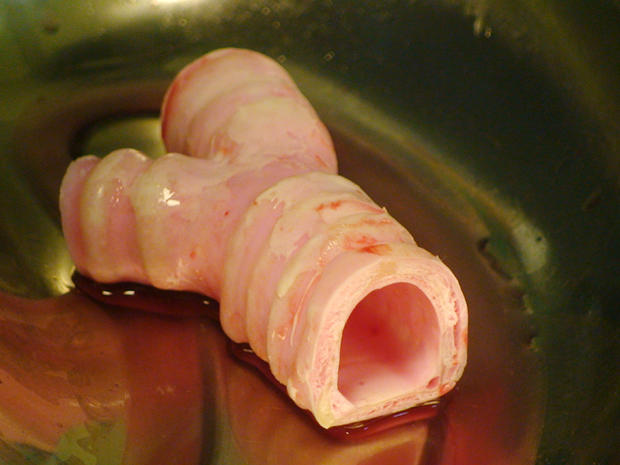First transplant of lab-grown windpipe a success; recipient expected to recover
(CBS/AP) A lab-grown organ, made from a man's stem cells, may have saved his own life.
Pictures: First lab-grown windpipe saves cancer patient
A Swedish hospital reports its doctors implanted a synthetic windpipe into a 36-year-old man who had tracheal cancer, in what its officials call the first successful procedure of its kind.
The Karolinska University Hospital in Stockholm said the man underwent surgery on June 9, and that the patient is on his way to a "full recovery," where he will be released from the hospital today.
Doctors say the patient had no other options after they couldn't find a suitable windpipe donor, once his late stage cancer had almost fully blocked his windpipe.
Professor Paolo Macchiarini, who has also involved in previous windpipe transplants, said the procedure is "the first synthetic tissue engineered windpipe that has been successfully transplanted."
Macchiarini and an international team first built a scaffold and a bioreactor - a device specially designed to simulate natural tissue growth. New cells to line and cover the windpipe were then grown on the scaffold for two days prior to the transplant. The plastic compound used to make the artificial windpipe has a spongy surface that speeds cell growth.
The scientists report the operation was a success.
"Because the cells used to regenerate the trachea were the patient's own, there has been no rejection of the transplant and the patient is not taking (anti-rejection) drugs," Karolinska said in a statement.
Up until now, windpipe transplants were performed using donor windpipes and the patients' own stem cells. But this latest surgery is the first to use an entirely man-made organ. Several years ago, Macchiarini and colleagues used a patient's bone marrow stem cells to create millions of epithelial and cartilage cells to coat a Colombian patient's new windpipe, damaged from tuberculosis.
And in Belgium, doctors previously implanted a donor windpipe into their patient's arm to restore its blood supply and grow new tissue before placing it into a woman's throat. In both transplants, because the patients' own cells were used to coat the windpipes, neither of them needs to take anti-rejection medicines.
Experts say synthetic structures could be used to fashion simple organs like the windpipe, esophagus or bladder, but caution it will be years before scientists can create more complicated organs, like kidneys or hearts, in a lab.
Macchiarini said surgeries like the one just performed in Sweden are planned before the end of this year and will include two adult patients and one child.
Click here to see the surgery.


